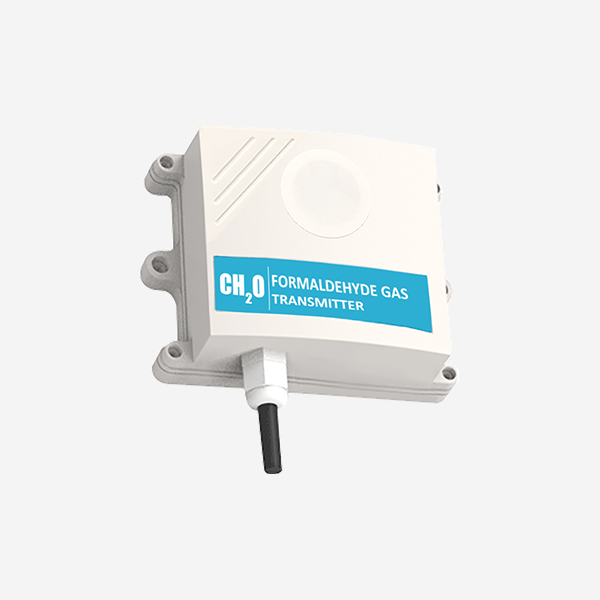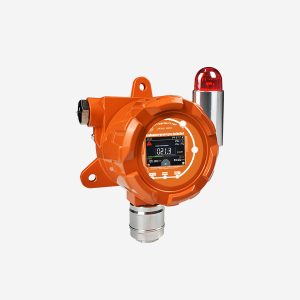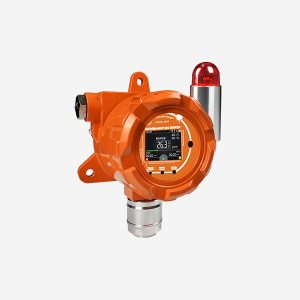Formaldehyde Sensor
The gas sensor is an electrochemical formaldehyde sensor, which has the advantages of high precision, fast response speed and long service life. The output resolution of formaldehyde sensor can reach 0.01ppm, which can monitor the measured gas online for 24 hours. With the free cloud platform provided by our company, centralized monitoring of multiple locations and devices can be realized.
- MOQ: 1 PCS
- Delivery date: within 24 hours

Features
1. Beautiful appearance, small size and easy installation;
2. Fast response speed and high measurement accuracy;
3. Strong anti-interference ability;
4. Reasonable structural design and stable performance;
5. Full-scale calibration output, good consistency;
6. International standard internal wiring and external installation.
7. Range 0-5ppm, other ranges can also be customized.
8. On-site power supply adopts a 12~24V DC wide-voltage power supply, which can adapt to a variety of on-site DC power supplies.
9. Long service life, it can be used for 5 years in a normal environment.
Formaldehyde Sensor parameters

FAQ – Electrochemical formaldehyde sensor
WHY MEASURE FORMALDEHYDE?
Formaldehyde is a toxic gas. If you inhale excessive formaldehyde, it will seriously irritate the human respiratory tract, and even cause breathing difficulties and cause death. Even if a small amount of formaldehyde is inhaled for a long time, it will have certain effects on the respiratory tract and may cause nausea Symptoms such as pain, and even cause chronic respiratory diseases, chest tightness, and other diseases. High concentrations of formaldehyde can cause serious damage to human organs and even cause cancer. Long-term living in an environment with formaldehyde gas will also cause great harm to human internal organs.
WHAT ARE THE MEASURING PRINCIPLES OF CH2O SENSORS?
The sensors used to detect formaldehyde include electrochemical sensors, optical sensors, and photochemical sensors. The structure of the electrochemical sensor is relatively simple, and the cost is relatively low. Among them, high-quality products have stable performance, and the measurement range and resolution can meet the requirements of indoor environment detection. However, the disadvantage is that there are many interfering substances and it is consumed due to the irreversible chemical reaction between the electrolyte and the measured formaldehyde gas, so its working life is generally relatively short. Optical sensors are relatively expensive and bulky, so they are not suitable for online real-time analysis, which limits their widespread use. Although the photochemical sensor improves the selectivity, the activity of the enzyme and other factors cause the sensor to be unstable and lack practicality. Moreover, the price of the general CH2O gas sensor is too high to be popularized.
WHERE TO USE FORMALDEHYDE SENSOR?
Formaldehyde sensors are mainly used in industries or equipment that require long-term online monitoring of formaldehyde concentration, such as smart homes, air cleaners, and air conditioners. In addition, the formaldehyde sensor is suitable for places where further determination of formaldehyde gas is required, such as the petrochemical industry, organic chemical storage places, chemical laboratories, paint and coating industries, etc.
IS THE CALIBRATION OF THE HCHO SENSOR STABLE?
From the long-term data point of view, the professionally calibrated formaldehyde sensor can guarantee the stability of 3-5 years.
WHAT IS A FORMALDEHYDE SENSOR?
The formaldehyde sensor is used by people to detect formaldehyde gas and is specially designed for gas detection.
WHAT IS THE REPEATABILITY OF THE FORMALDEHYDE SENSOR?
Within the range that we can currently test, the repeatability is currently less than 2% of the signal.




Reviews
There are no reviews yet.